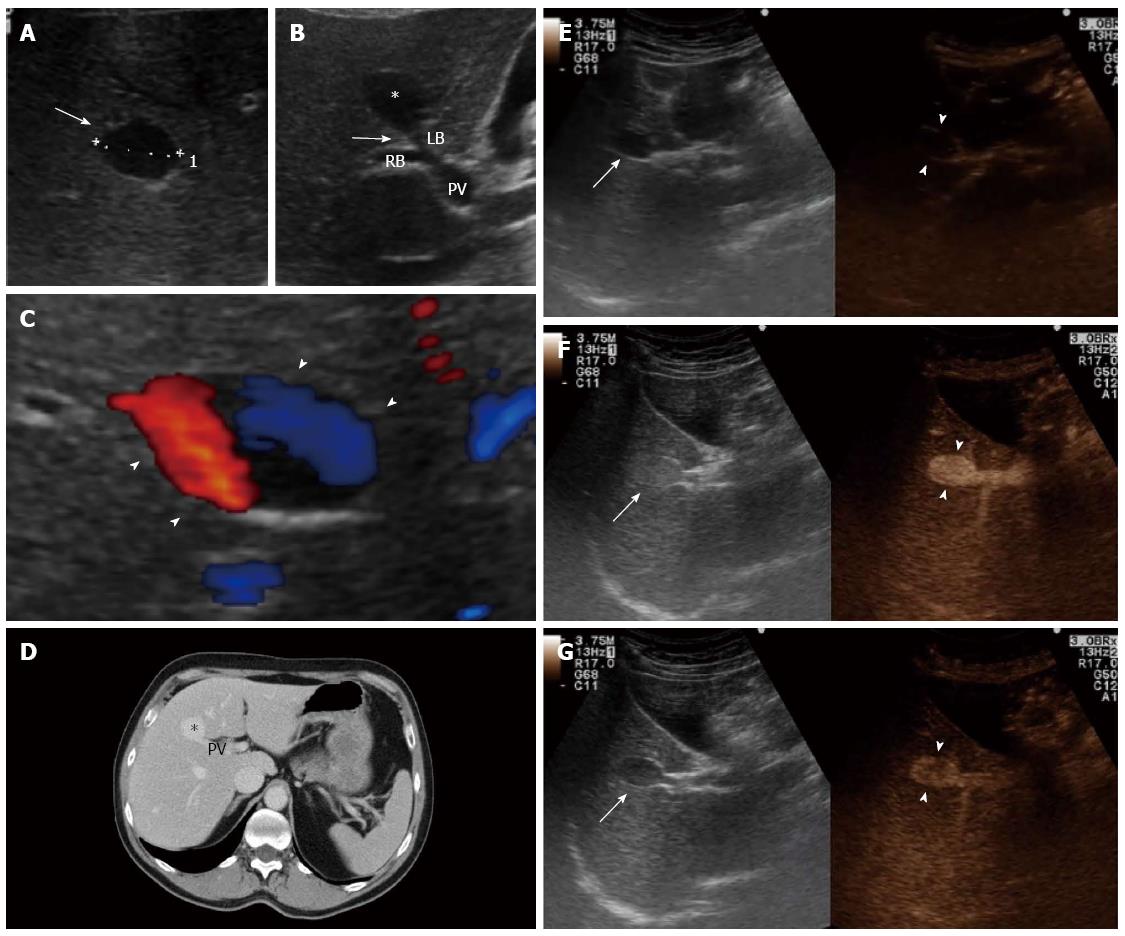Copyright
©2014 Baishideng Publishing Group Inc.
World J Gastroenterol. Dec 28, 2014; 20(48): 18375-18383
Published online Dec 28, 2014. doi: 10.3748/wjg.v20.i48.18375
Published online Dec 28, 2014. doi: 10.3748/wjg.v20.i48.18375
Figure 3 Patient 3: Portal venous system aneurysm in a 64-year-old man who presented with a 3-mo history of dyspepsia.
A: Right transverse subcostal view shows an anechoic lesion without posterior acoustic enhancement in the hepatic segment V (arrow), with a maximum size of 22 mm (caliper 1); B: Right oblique sagittal view shows the direct communication between the lesion (asterisk) and the left branch of the portal vein (arrow); C: Right transverse subcostal view with color Doppler shows “to-and-fro” flow inside the lesion (“Yin-Yang” sign, arrowheads); D-G: Contrast-enhanced ultrasound (CEUS) and computed tomography (CT) findings: Right oblique sagittal view, in dual screen mode, shows the CEUS characteristics of the portal venous system aneurysm (PVSA) (arrows), which is not enhanced through the arterial phase (8 s, arrowheads, E) and completely hyperenhanced with a swirling pattern throughout the portal venous phase (1 min 7 s, arrowheads, F). The PVSA is evident also during the late phase (2 min 28 s, arrowheads, G). Axial CT scan (D) confirmed the presence of sacciform PVSA (asterisk) during the portal phase. PV: Portal vein; RB and LB: Right and left branches of the portal vein, respectively.
- Citation: Tana C, Dietrich CF, Badea R, Chiorean L, Carrieri V, Schiavone C. Contrast-enhanced ultrasound in portal venous system aneurysms: A multi-center study. World J Gastroenterol 2014; 20(48): 18375-18383
- URL: https://www.wjgnet.com/1007-9327/full/v20/i48/18375.htm
- DOI: https://dx.doi.org/10.3748/wjg.v20.i48.18375









